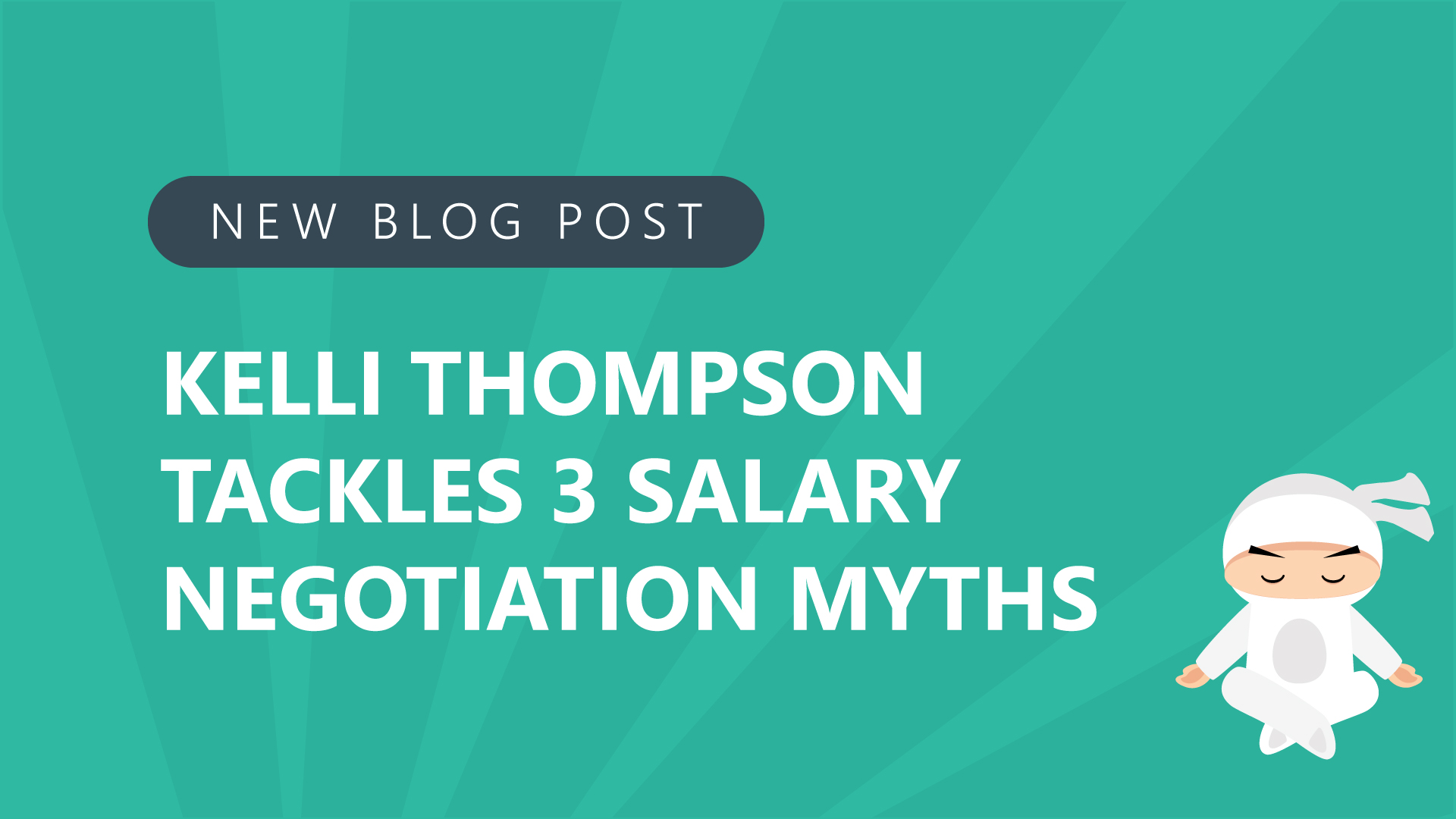Kelli Thompson spent 15 years climbing the ladder in corporate banking. She left to work for a tech company and oversaw their HR. After that, she worked for a leadership development consulting company, which gave her her first taste of entrepreneurship. She started her own corporate practice in 2019. She specializes in helping women lead with clarity and confidence.
Part of her work focuses on helping women confidently navigate salary negotiations, which she discusses in episode #405 of Negotiations Ninja. Where does she usually start? By dissecting salary negotiating myths.
Myth #1: It’s rude to ask
Kelli’s always observed that men have more money conversations than women. In the past, men were usually the head of their households. Men asked about salaries sooner than women. Women have been socialized to believe that it’s rude to ask for more money and that they should be “grateful” for what they have.
They’re worried that it’s a touchy subject, which can delay important conversations. But for HR, Kelli jokes that talking about money is like talking about the weather. They talk about money, compensation, raises, salary adjustments, etc. all day long. Kelli strives to make the salary conversation a safe place. It is not rude to ask.
Myth #2: Talk about money or compensation until the end of the process
To further drive home the point about money, Kelli emphasizes that recruiters and HR professionals are ready and expecting to talk about money in the recruiting process. It’s appropriate to ask and ask early so no one’s time is wasted. If you want $150,000 and an employer’s top offer is $100,000, each party can move on.
Myth #3: If the job offer is higher than what you currently make, you shouldn’t negotiate higher
Women and people of color have traditionally been underpaid for the same work that men have done. Many states have outlawed asking what someone previously made at a job. Why? Because it creates an anchoring bias.
If an HR team sees three candidates with similar experience—and they’re trying to budget—it can heavily influence decision-making. If they can get “Mark” for $80,000 vs. someone making more, they anchor to that price. By removing the anchoring bias, we stop perpetuating the continual underpayment of women and minorities.
When women get a job offer, they tend to jump to “I should just take it. It’s $20,000 more than what I’m making now!” It feels good to get a good offer.
But is it in alignment with the market pay for the work you’re doing and the location you’ll be working in? What about the type and size of the company you’ll be working in? What about your level of experience? Get the data. Make sure you’re not underpaid on a systemic level. Make sure the offer is fair.
Navigating “How much did you make before?”
Some states prevent HR professionals from asking how much you currently—or have previously—made. In those states without protection, you can answer the question in a couple of ways.
If you value honesty and transparency in the process, feel free to be open about your current or previous salary. You can say, “I’m currently making $80,000. However, I do believe that market factors A, B, and C that the appropriate market pay for my position should be closer to $100,000. I’d be looking for a range between $110,000-$115,000.”
Be clear about what you’re looking for. These 3 negotiation myths should not prevent you from asking for what you deserve and negotiating a better salary. Learn more in episode #405 of Negotiations Ninja.

